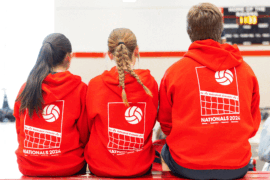By Connie Jeske Crane

Definition
Officially launched in June 2022, Abuse-Free Sport is Canada’s independent safe-sport mechanism aimed at preventing and addressing maltreatment throughout the Canadian sport system. The program is a pillar of the newly created Office of the Sport Integrity Commissioner (OSIC), mandated to administer complaints related to violations of the Universal Code of Conduct to Prevent and Address Maltreatment in Sport (UCCMS). Elements include prevention and education initiatives plus the Canadian Sport Helpline.
Authority and jurisdiction
“Right now we have a mandate that comes from the federal government. At this moment with a very young program, we consider our potential clients to be…sports that operate within a federated environment at the national level,” says Marie-Claude Asselin, CEO of the Sport Dispute Resolution Centre of Canada (SDRCC).
To give it some teeth, Ottawa has made participation mandatory by April 2023. Asselin confirms, “National sport organizations receiving funding from Sport Canada or from the Government of Canada will be mandated to join the Abuse-Free Sport program,” adding, “That, I think, will allow more people to have access to our services.”
Cost-sharing model
Funded by the Canadian government, Asselin says, “It was a request by the Government of Canada that the model be a cost-sharing one so that it would be sustainable.” As such, national program signatories contribute an annual financial amount, while provinces and territories pay for services hired.
Education and prevention
Asselin says, “A lot of people think about the complaint management, but we see our role in education, information and resources for organizations and individuals delivering sport programs in Canada with prevention in mind. We think this is going to curb a lot of the incidents that would have happened in the past or may still be happening.”
Communication
Raising awareness of this new independent mechanism among athletes—who previously brought complaints to their own sport bodies—is key. So far, says Asselin, “We’ve organized several information sessions since June last year, with specific target groups, including athletes and sport organization leaders…. We also hold webinars that are open to the public.”
Limitations
While a welcome step, insiders see potential wrinkles. First, many national athletes may be subject to non-disclosure agreements. The legal enforceability of NDAs in relation to complaints is currently being examined.
In addition, with Abuse-Free Sport not aimed at the grassroots level (where most abuse cases arise), a gap remains.
Published April, 2023



